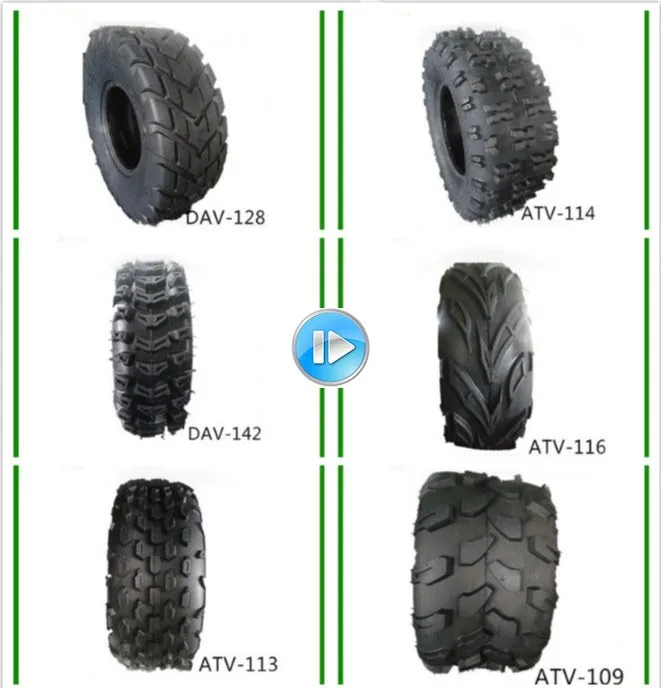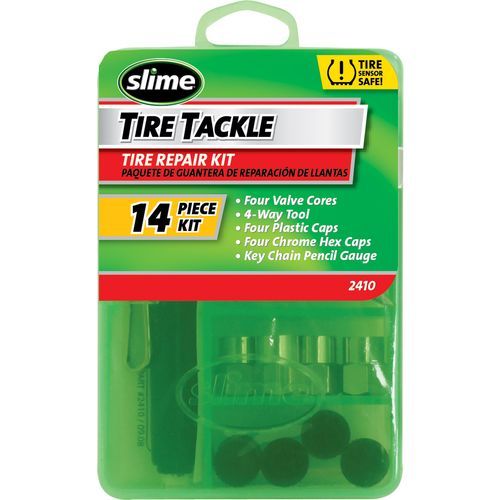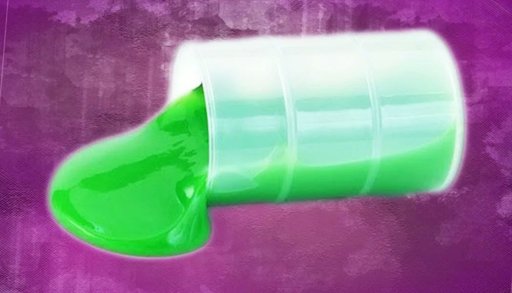You are here: Home / Off Road / How Much Slime To Put In Atv Tire?
Jonathan Holmes
How much slime to put on tires? If you have large tires on your Motorcycle, ATV, Truck, Tractor or Passenger Vehicle, use our handy Slime Calculator (Application Table) to determine exactly how much Slime to install as your tire may require more than our general application amount.
How much is ATV tire injected? In addition, the amount required to be injected in an ATV tire is up to 32 ounces of product, not only does that slime tend to build up and coat the inside of the tire, but there is concern that it also creates an uneven balance in the tire since the slime can tend to collect in certain areas of the tire.
What is the best tire sealant for an ATV? In fact, this works so well that it will last the entire life of your tire and even works on tires that you thought were unusable from dry rot. It’s a tire sealant for your ATV and the one I recommend most is TireJect Tire Sealant. Keep reading below to get my take on it or you can simply head over to Amazon to see what it is currently selling for.
What is slime tire sealant? Slime Tire sealant instantly and repeatedly repairs tread area punctures up to 1/4″ in diameter using Fibro-Seal® Technology. Use as a repair measure in Highway vehicles. How much Slime per tire?: To find out how much Slime you need in your tires, select a standard tire size below.
Table of Contents
There is no air inside your Slime bottle, just the powerful puncture preventing liquid. The liquid doesn’t expand (like a foam) when it enters your tire. Instead, as your tire rotates, the liquid coats the inside of the tire (Which is why Slime doesn’t work inside inflatables – no rotation.
in each rear and 34 oz. in each front , ULTRASEAL comes in a gallon container with a hand pump and each stroke is 2 oz. if I remember correctly FYI , Slimes Website says that after 2 years their product needs to be replaced and ULTRASEAL lasts the life of the Tire
in each front , ULTRASEAL comes in a gallon container with a hand pump and each stroke is 2 oz. if I remember correctly FYI , Slimes Website says that after 2 years their product needs to be replaced and ULTRASEAL lasts the life of the Tire
2 years
Can Slime tire sealant be added to a tire to balance it? No. We do not recommend using Slime for this purpose.
We do not recommend using Slime for this purpose.
Tire sealant may also damage the sensors inside your tire, keeping the pressure constant and failing to alert the driver inside the car if the tire pressure was to actually become low. It’s not a permanent fix for a flat tire. Leaky tire sealant has been known to corrode wheels, which can be costly to replace.
Slime will not seal bead leaks or large punctures. If you are installing Slime to repair an existing puncture, we recommend checking the tire for puncturing objects and removing any if found. This forces the sealant to flow around the inner tube or tire allowing it to locate and repair the puncture.
– Remove the wheel from the car.
– Remove any excess air left in the tyre by putting pressure on the valve stem.
– Get rid of the corroded parts of the rim.
– With solvent appropriate for rubber, wipe the area of the tyre that touches the rim.
Will Slime damage my rims? If pre-existing damage is present, we do not recommend using Slime. Do not leave Slime inside your tires for more than 2 years. After that time, we cannot guarantee the integrity of your rims.
Do not leave Slime inside your tires for more than 2 years. After that time, we cannot guarantee the integrity of your rims.
I have used slime in all my ATV tires for years. Works great! Once my son had a 250ex and ran into a bunch of very thick and sharp thorns. Both fronts at at least 5 holes each.
Filed Under: Off Road
By Natalie Martins / January 11, 2017 August 23, 2022 / Gear
Spend $10 and 15 minutes in your garage and save hours repairing and patching flats. Slime Tire Sealant is a lifesaver.
RATING: Exceptional
MSRP: $10
BEST FOR: Everyone! Spend $10 and 15 minutes in your garage and save hours repairing and patching flats.
View on Amazon
PROS:
CONS:
Flat tires are a pain. Not only are they frustrating for kids and parents, they often sideline a bike for weeks. Fortunately, preventing flats is as simple as spending $8 at Walmart (or $10 on Amazon) and 15 minutes in the garage. Tire sealants is essentially a fiber-filled “slime” that coats the inside of a bike tube to quickly and efficiently repair and prevents flats. In most cases, Slime only needs to be added to a tire once and prevents flats for essentially the life of the tire or tube.
In the four years we have been using Slime in our kid’s bike tires, we have only experienced one flat after our son rode through a field of thorny weeds. Honestly, with all the bike riding that gets done around here, I can’t imagine life without tire sealant! The most widely available brand is Slime and is sold at Walmart, Target, most automotive parts store and Amazon. You only need about 2 oz. of slime per 12″ tire, so the 8 oz. bottle sold in the bicycle section is sufficient for two bikes. If you have several bikes to seal, consider heading over to the automotive department where the Slime tends to be cheaper by the ounce.
You only need about 2 oz. of slime per 12″ tire, so the 8 oz. bottle sold in the bicycle section is sufficient for two bikes. If you have several bikes to seal, consider heading over to the automotive department where the Slime tends to be cheaper by the ounce.
In order to add the Slime you will need to remove all the air out of the tire, so be sure to have a bike pump nearby before you start.
The inner valve of the tire stem valve must first be removed before you can add any slime. While it sounds daunting, it is actually quite easy to remove using the included tool.
Once the valve is out, it’s time to add the Slime. You will need to add about 2 oz. to a 12″ tire (1/4 cup) and about 2.5 oz. for a 16″ tire. For larger tires a chart is given on the back of the slime container.
Once the Slime is in place, use the tool to re-insert the core. Next, inflate the tire to the correct PSI (listed on tire sidewall) and then spin the wheel to allow the Slime to evenly distribute throughout the tire.
Next, inflate the tire to the correct PSI (listed on tire sidewall) and then spin the wheel to allow the Slime to evenly distribute throughout the tire.
Repeat steps with the second tire and then you are ready to ride. Slime does not require any waiting period, allowing the bike to be used right away.
FTC Disclosure:Affiliate links are included in this review. No monetary compensation was provided for this review. The product reviewed was purchased by Two Wheeling Tots and not supplied by the manufacturer. All opinions and images are that of Two Wheeling Tots LLC. All content and images are copyrighted and should not be used or replicated in any way. View our Terms of Use.
Tire pressure affects the flotation, stability, handling and smoothness of the ATV. Therefore, it is important to adhere to the optimal parameters, which depend on the type of coating and load. What pressure is recommended for CFMOTO ATVs - we will tell in the article.
What pressure is recommended for CFMOTO ATVs - we will tell in the article.
CFMOTO indicates the recommended pressure in kilopascals (kPa). 1 kPa equals 0.0098 atmospheres (atm) or 0.145 pounds-force per square inch (psi). It is important not to confuse these units of measurement when inflating tires.
The recommended tire pressure for CFMOTO ATV is indicated in the instruction manual and on the vehicle itself in the area of the left rear fender.
Tires are marked with the maximum pressure they can withstand.
Low tire pressure improves off-road capability, allowing the ATV to sink less in mud, swamp, snow or sand. This is due to the fact that the contact patch of the tire with the surface increases, and the specific pressure on the ground decreases. In addition, poorly inflated tires are less “blurred” with dirt, more easily leave the rut and roll over obstacles such as trees, stumps or large stones lying on the road.
Most CFMOTO ATVs are equipped with ANCLA tires, the normal pressure of which, according to the manufacturer, is 45 kPa. This is sufficient for off-road routes. A reasonable lower limit is up to 35 kPa. It is possible to bleed even more air only if there are beadlocks - devices that securely press the tire to the side of the disk.
All-terrain vehicle tires with a car seat must have a higher pressure - from 70 kPa, the exact parameters depend on the model.
If the pressure is too low:
It is best to inflate your tires before long trips on asphalt or other hard surfaces. This will increase stability and control in corners and on a straight line - due to less deformation of the rubber. In addition, the tread will not wear out as much.
In addition, the tread will not wear out as much.
The pressure should also be increased when transporting a heavy load and a passenger.
Optimum tire pressure for a CFMOTO ATV with a motorcycle seat when driving on asphalt is 70-90 kPa.
If the pressure is too high:
It is advisable to do this before each ride - when the tire is cold. You will need a low pressure gauge to check. When using a conventional car, there will be a large error.
The recommended tire pressure for CFMOTO ATVs is 45 kPa. For all-terrain vehicles (SSV), the optimal parameters are different - more than 70 kPa. Before carrying a passenger and a heavy load or a long drive on asphalt, you can pump more.
If the pressure is too low, there is a risk of breakage, deterioration of handling and stability. If it is too high, it becomes uncomfortable to ride, all the bumps in the road are felt, the load on the suspension and steering increases.
Despite all the reliability of the ATV, the driver is not immune from traffic accidents. The rider is waiting for falls, collisions and many other troubles. But more than 70% of accidents can be avoided by following safety precautions, conducting regular maintenance and monitoring the tire pressure of the ATV. Wheels affect not only ride comfort, but also the likelihood of accidents. For example, a machine with inflated tires will gallop over rough terrain like a mountain goat.
Contents
ATV tire pressure affects:
 Properly inflated wheels will improve the maneuverability and increase the sensitivity of the machine.
Properly inflated wheels will improve the maneuverability and increase the sensitivity of the machine.
Tire pressure affects the safety of the driver, so do not neglect even such a small parameter.
Before each departure, it is recommended not only to inspect the equipment, but also to check the pressure in the wheels. For each type of route, appropriate indicators should be selected.
Recommendations:
 The car begins to enter corners more smoothly, gains maximum speed faster and accelerates better.
The car begins to enter corners more smoothly, gains maximum speed faster and accelerates better. Documentation must indicate the optimum tire pressure for the ATV to ensure a comfortable ride. These indicators are individual and depend on the purpose of the device, season, weight and other parameters of the equipment. For example, for a comfortable ride on asphalt, the tire pressure of the CFmoto X8 ATV should be 1.1-1.5 bar. Surprisingly, such high rates favorably affect the handling of the vehicle and reduce tire wear.
If the manufacturer's recommendations are not in the documentation, the general standards should be followed. The optimal indicator for driving on soft surfaces is 0.35-0.83 bar. For trips on hard roads, it should be increased by 25-40%.
Note: The rear wheels should be inflated slightly more than the front. This will improve ride comfort and increase maneuverability.
This will improve ride comfort and increase maneuverability.
Many novice drivers are interested in what pressure should be in ATV tires? However, they do not think about its effect on tires. When driving on flat tires, the "contact patch" increases. Low pressure will increase ride comfort on soft trails, but at the same time increase tire wear.
Pumped cameras will also bring a lot of problems. Due to the reduction of the “contact patch”, the device becomes a time bomb, and poses a danger to the driver. High pressure reduces grip, damping and sidewall flexibility.
The driver's safety, handling and maneuverability of the vehicle depend on the correct pressure in the ATV wheels and the quality of the rubber.
When choosing tires, you need to consider personal needs, driving style, track surface and many other parameters. First of all, you should pay attention to the labeling. The rubber should have an "E" on it. This marking informs that the products comply with all European standards.
The rubber should have an "E" on it. This marking informs that the products comply with all European standards.
The bus must also have a number. For example, the code "11" means that the tire was made in England. If the number is missing, then the rest of the marking is invalid.
Also note:
